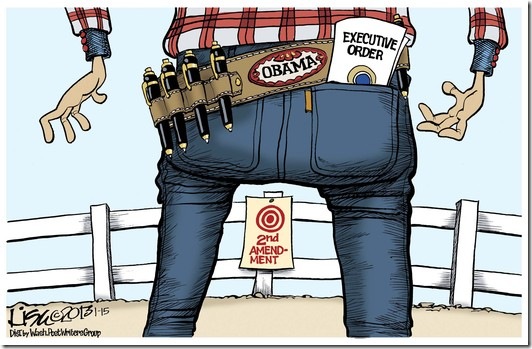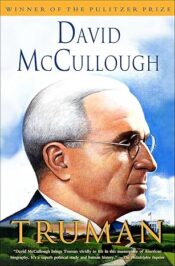
A Review of Research Proposals By National Academy of Sciences For CDC Study of Gun Violence
This is a followup to It’s For Your Health . The following is the result of a careful analysis and reading of the document mentioned in the earlier post.  It is entitled Priorities For Research To Reduce The Threat of Firearm-Related Violence and was produced by National Academy of Sciences.
The best thing that can be said of it is that tax dollars did not pay for it.  Congress has banned funding research by the CDC linking firearm ownership with disease, as the authors of this paper lament,
In addition to the restrictions on certain kinds of data collection, congressional action in 1996 effectively halted all firearm-related injury research at the CDC by prohibiting the use of federal funding “to advocate or promote gun control.â€Â In 2011, Congress enacted similar restrictions affecting the entire U.S.. Department of Health and Human Services. The net result was an overall reduction in firearm violence research. AS a result, the past 20 years have witnessed diminished progress in understanding the causes and effects of firearm violence.
 Nevertheless, in January of 2013, President Obama has ordered that the CDC and “other relevant federal agencies, immediately begin identifying the most pressing firearm-related research problems.â€
Nevertheless, in January of 2013, President Obama has ordered that the CDC and “other relevant federal agencies, immediately begin identifying the most pressing firearm-related research problems.â€
So, in response, Kaiser Permanente, The Annie E. Casey Foundation, and some other private donors funded this document.
This paper outlines a focus for research by the CDC:
- the characteristics of firearm violence
- risk and protective factors
- intervention and strategies
- gun safety technology
- the influence of video games and other media
Now who could argue with that?
Superficially the paper evinces a veneer of scientific impartiality and fairness. After all, how can we have meaningful debates about this critical issue without good research?
In the absence of this research policy makers will be left to debate controversial policies without scientifically sound evidence about their potential effects.
But there is a distinct undertone prevalent throughout the paper. In the name of good science one of the research topics recommended for priority study is:
Characterize the scope of and motivations for gun acquisition, ownership, and use, and how they are distributed across subpopulations.
We already know who is using guns in crimes. We already know who is not. Criminals want guns for the power it gives them to perpetrate their crimes. What is not known is the behavior of law-abiding, likely conservative or libertarian citizens.
At several points the paper contradicts itself, at one point bemoaning the absence of a consolidated database with “the number, locations, and types of firearms and firearm owners in the United States.â€Â It is all for the sake of good science, after all. But to overcome those silly concerns of about civil liberties, this data can be “anonymized.â€
Really? That is not terribly comforting. Data anonymization involves first collecting the data and then removing PII (Personal Identification Information) from it, so that researchers can’t identify individuals.   Alas, the ever-so-trustworthy government agencies will be the keepers of the unadulterated data.  Guess what? It’s not the researchers Americans have to worry about.
As one reads this document the veneer of fairness is carefully maintained throughout as one wends ones way through the field of bones tossed about to satisfy skeptics. In the introduction they admit that the impetus for this document and the research recommendations it is proposing is based on a red herring:
On January 16, 2013, President Barack Obama announced Now Is the Time, a plan to address firearm violence in order “to better protect our children and our communities from tragic mass shootings like those in Newtown, Aurora, Oak Creek, and Tucson†… These multiple-victim homicides, because of their shocking nature, have commanded the attention of the public, the media, and policy officials, even though they are relatively rare and account for a small portion of all firearm-related injuries and deaths in the United States.
Later in the document,
Although it may seem that protection against such an event  [mass shootings] is nearly impossible, proactive law enforcement activities, including community policing and intelligence-led policing may help prevent some mass shootings.
And yet again,
Concerns about privacy regarding gun ownership, as well as individuals’ mental health records, encumber data collection and research on firearm violence.
When Rahm Emmanuel famously characterized the Gabby Gifford shooting as a “good crisis,â€Â that shouldn’t go to waste, he exemplified the modus operandi of this administration. In this case one might replace crisis with “shooting.â€Â   One can also see other aspects of the left’s mindset. When in doubt, pass a law. It might help. They don’t stop to consider, what Bastiat called unintended consequences, “that which is not seen.â€Â But then again, perhaps those consequences are the actual agenda.
In making the most of these awful events, the administration, through it’s minions, seeks to take the “opportunity†to gather better data.
Technological opportunities and recent advances that can enhance linkages among datasets from other federal, state, and local sources may enable better predictive analytics, real-time information sharing, and reduction of data noise.
How comforting.
In another bone to skeptics, the paper cites research about guns used for self-defense.
Almost all national survey estimates indicate that defensive gun uses by victims are at least as common as offensive uses by criminals, with estimates of annual uses ranging from about 500,000 to more than 3 million per year, in the context of about 300,000 violent crimes involving firearms in 2008.
But of course, this can’t be allowed to stand on its own – even though the admission is made that almost all national survey estimates agree about the large number of defensive uses of guns.
… some scholars point to radically lower estimate of only 108,000 annual defensive uses …
Once again putting skeptics in the position of trying to prove a negative. What tragedies didn’t happen as a result of a potential victims being armed?
The paper continues, advising “additional, careful exploration,†by suggesting that the benefits of being able to protect oneself and one’s family might not be all good.
Even when the defensive use of guns is effective in averting death or injury for the gun user in cases of crime, it is still possible that keeping a gun in the home or carrying a gun in public — concealed or open carry — may have a different net effect on the rate of injury. For example, if gun ownership raises the risk of suicide homicide, or the use of weapons by those who invade the homes of gun owners this could cancel or outweigh the beneficial effects of defensive gun use.
The real purpose behind this paper, and the research proposed, is to establish subtle links in the public mind between disease and gun ownership.
In a section entitled Firearm-Related Violence as a Public Health Issue, the authors assert that gun violence is,
… a topic of considerable public health importance and suggest that a public health approach should be incorporated into the strategies used to prevent future harm and injuries. Violence, including firearm related violence, has been shown to be contagious. Recognizing this, the academic community has suggested that research examine violence much like is done for contagious diseases.
It doesn’t matter what the facts really are, or even all the protestations to the contrary. The fact of having the CDC (rather than the BATF or some other agency) involved in research that treats gun violence like a communicable disease makes this linkage.
Here is another example from later in the paper,
Unintentional firearm injury to children deserves special attention due to the uniquely vulnerable nature of this population, although these incidents are relatively infrequent compared with other types of firearm violence and thus do not constitute a large burden of disease.
Note the way the word ‘disease’ has been inserted, almost as an aside, with no rationale for its use. Thus a value-laden assumption is inserted into the so-called research without any substantiation. Categorizing firearm violence as a public health issue opens the door for legitimizing all kinds of things that wouldn’t be considered in a realm other than public health.
In a section entitled Applying Public Health Strategies to Reducing Firearm Violence, the paper’s authors suggest employing the same techniques used to reduce “tobacco use, unintentional poisoning, and motor vehicle fatalities.â€Â They point out the utility of comparing what has been done to reduce motor vehicle related injuries as a possible model for what might be done to reduce gun violence.
Later the authors suggest …
Public health approaches to ameliorating gun violence have been built upon models from other public health successes, such as tobacco control and automobile safety. These successful models have employed population-based approaches such as taxation, public education, efforts to change social norms, and engineering safety.
Who is up for a little social engineering? The authors would like research to answer the question:
Do programs that focus on changing norms in a community decrease illegal gun carrying?
“Illegal gun carrying?†The reference is to citizens exercising their rights under the Second Amendment. Felons and criminals are unlikely to be influenced by “taxation, public education, and efforts to change to change social norms.†That is too absurd a concept even for the authors of a polemic masquerading as an objective inquiry. The underlying assumption is that there is something inherently wrong with gun ownership. How can we get you to stop beating your wife?
Then there this suggestion as a topic for more research:
To what degree would mandatory reporting of transfer of private ownership of guns be effective in reducing illegal access?
Let’s cure headaches with decapitation.
There are also proposals to remove firearms from people’s homes if suspected of domestic violence or mental illness. Of course privacy goes out the window if any of these type solutions are to be implemented. The government has to know who has guns.
Once again, for any of these supposedly open-minded researchers to be able to do their jobs, good data is necessary.
There is a pressing need to obtain up-to-date, accurate information about how many guns are owned in the United States, their distribution and types, how people acquire them, and how they are used. Policies that seek to reduce the health burden of firearm-related violence can be strengthened by being grounded in sound information about the possession of guns for nonviolent as well as violent purposes. This kind of information should be obtained for three broad populations of interest: (1) The general population of the United States, (2) the youth population of the United States, and (3) offenders.
And here are some methodologies recommended:
- Collect data about gun ownership, acquisition, and use for various groups within the U.S. general population.
- …
- …
- Collect data about the sources (e.g., gifts, purchases), means (e.g. theft, trafficking) and legality of possession by various groups, particularly including offenders.
Â
Recognizing the preponderance of crime associated with certain communities, for which the authors have several ready explanations. One of these,
… high levels of concentrated disadvantage, deficiency of youth services.
Gosh, if government were only more involved this might not be such a problem. We just need better youth services.
Continuing in this vein, the authors acknowledge that gun violence doesn’t seem to be much of an issue where families are stable.
Conversely, various “direct protective†and “buffering protective†factors may minimize the effects of certain risk factors, .e.g. high grade point average; religiosity; consistent, close respectful relationships with parents; and involvement in social activities are protective factors against violence among youth.
Gee, it sounds like a description of most law-abiding conservative gun-owners. What a surprise. However, it might require the deployment of legions of social workers to determine who meets the government’s criteria and can qualify for gun ownership.
The paper also has sections devoted to proposed research on the effects of video game violence, and the risks of becoming desensitized to violence.
Additionally there is a section which discusses gun safety features like biometric controls. In this section the authors admit the prohibitive nature of the costs involved and the likely necessity for them to be mandated by government if any were to go into widespread use. This would, of course effectively price a lot of people out of the market.
In summary, this effort by the Obama administration is nothing short of an end run around congressional prohibitions and the Fourth Amendment. It is another approach to building a national database of gun owners (in the name of research and public health). It is a multifaceted approach with includes, new laws and social engineering as its main components. The latter is to be accomplished both overtly and implicitly. Once having compiled the data and manipulated the findings, according to the unproven assumptions in this document, it is a relatively small step to confiscation – all in the name of preventing “disease†and protecting public health.
 The posts are coming!
The posts are coming!


0 comments
Kick things off by filling out the form below.
Leave a Comment